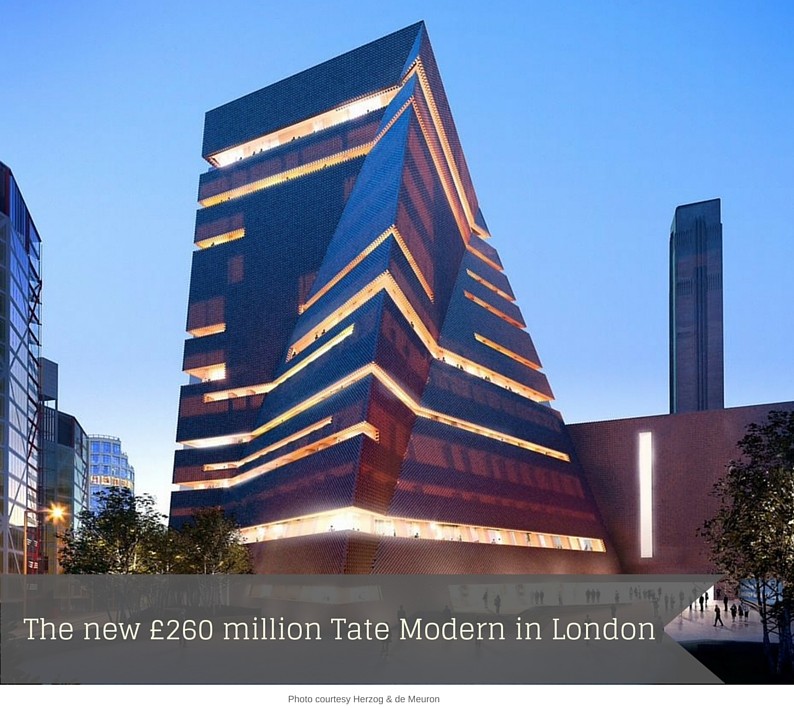London
Tim Cooke
At a cost of £260 million and its ten storeys topped with an enticing rooftop terrace offering magnificent views across London, Tate Modern’s new Switch House extension is the latest dramatic landmark on the banks of the River Thames.

The rooftop terrace looking towards St Paul’s Cathedral
It’s also a big message into the art world and beyond. There will be more space for different kinds of art, more art from around the world and more work on display by women artists.

Tate Director Sir Nick Serota speaking at the opening event
Tate says it will display an increasingly international view of modern and contemporary art. The gallery has been building its collections from Asia, the Middle East, Africa and Latin America – and some of these newer acquisitions are evident in the opening exhibitions in the Switch House galleries.

Louise Bourgeois’ Spider 1994 in the Switch House
It was tho’ the three-room presentation of Louise Bourgeois’s work including the monumental Spider, 1994 from the Artist Rooms collection which was attracting much of the chatter among the cognoscenti on the opening night. There has also been a complete rehang of the existing Boiler House galleries. Other eye-catchers for me included Ai Weiwei’s Tree, Germaine Richier’s Chessboard, Large Version, Sirkka-Liisa Kontinnen’s Girl on a Spacehopper (Byker) and Marwan Rechmaoui’s Beirut Caoutchouc in the Living Cities exhibition.

One of the new dining spaces
Of ten floors in the new Switch House extension, just four are given over to art. The others are home to a restaurant, events space, viewing level, members’ room, shop and bar. It was this approach which prompted the New Yorker in an early review to run the headline “Nice Museum. Where’s the art?”

One of the new Switch House galleries
But the building itself is spectacular and the new gallery spaces have great potential in their own right. Like any new-build gallery it needs to settle and the curators will have plenty of time and space to do dramatic things – and to get a sense of how the whole Tate Modern suite of spaces can work together. The extension has a marked effect on the feel of the rest of Tate Modern – on the Turbine Hall and the existing gallery spaces in the Boiler House. It rebalances the whole building in a new way, creating a different feel, experience and sense of engagement.
Sure, £260 million is a lot of money. But it’s a big building in every way and a big statement, with a big ambition to develop and change the way we look at contemporary art on a global scale.
It’s a development that’s certain to boost footfall above the five million or so visitors who come to Tate Modern annually. However, if it pulls off its mission to lead the evolution of how we view art history, at least in more recent times, its importance over time will eclipse any new building and even its record visitor numbers.
Impressive indeed – and lots more potential!

